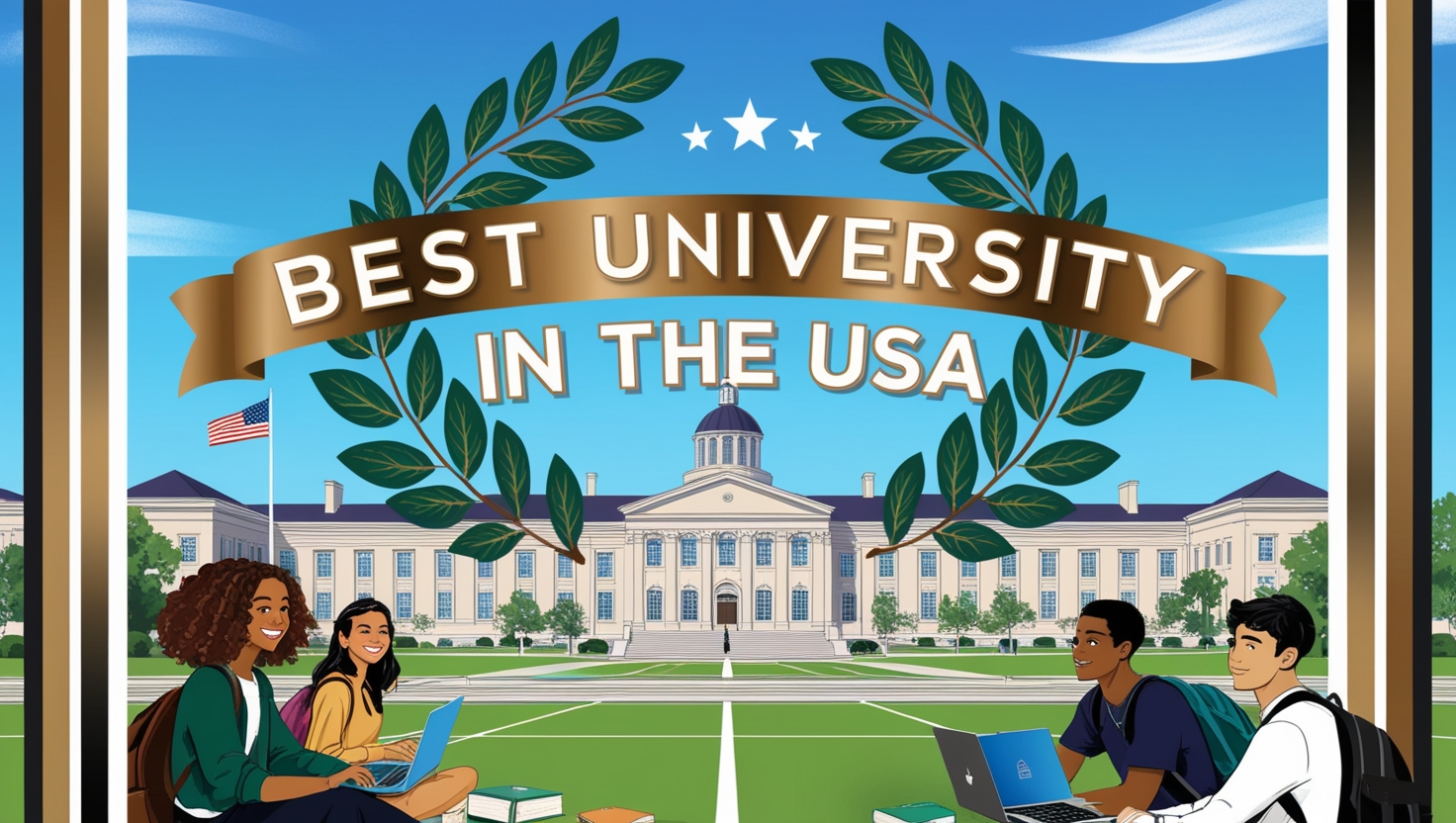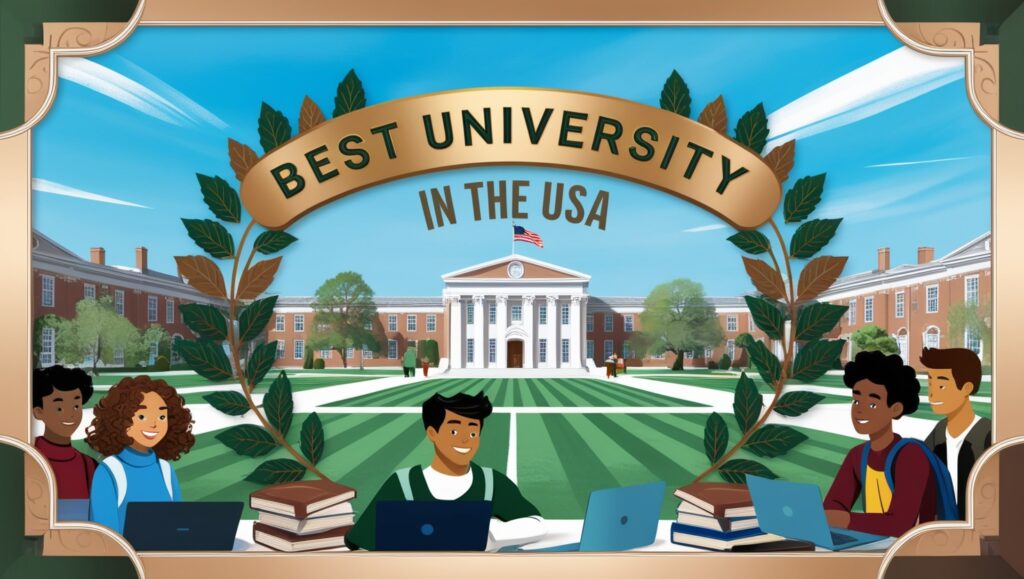
Best University in the USA
Introduction
Choosing the right university can be one of the most pivotal decisions in a young person’s life. I still remember the moment my cousin, Sarah, received her acceptance letter to Stanford University. As a first-generation college student, she felt the weight of expectations but also the thrill of opportunity. The news wasn’t just a personal victory; it signified hope and possibility for her entire family. This transformative experience speaks to the heart of why selecting the best university is crucial. It shapes not just careers, but lives.
When we talk about the “best university” in the USA, we’re delving into a multifaceted concept that encompasses academic excellence, vibrant student life, groundbreaking research, and a robust support system. Each of these elements plays a significant role in preparing students for their futures. But what exactly defines the “best”?
In this post, we will explore the attributes that contribute to the title of the best university in the USA. From evaluating academic programs to assessing student life and alumni success, we aim to provide a comprehensive overview of what makes a university truly exceptional.
1: Defining “Best”
Criteria for Evaluation
When assessing what makes a university the best, various metrics come into play. Academic reputation is often at the forefront. Universities with high-ranking faculty and research output tend to attract top students and funding. Graduation rates are another critical factor; institutions that guide students to complete their degrees in a timely manner demonstrate effective teaching and support systems. Other metrics include faculty-to-student ratios, financial resources, and job placement rates post-graduation. Each of these elements contributes to a university’s standing.

Rankings Overview
Several organizations publish rankings that claim to identify the best universities in the USA. The U.S. News & World Report, QS World University Rankings, and Times Higher Education are among the most reputable. These rankings often rely on a mix of quantitative data—like graduation rates and financial resources—and qualitative assessments, such as surveys of academic peers. While these rankings can provide valuable insights, they should be approached with caution; different methodologies can lead to vastly different results.
Subjectivity of “Best”
It’s crucial to recognize that the notion of the “best” university is subjective. For one student, a university’s rigorous engineering program may be paramount, while another might prioritize a vibrant arts community. Factors like location, campus culture, financial aid, and specific academic interests all play a role in determining what makes a university the best fit for an individual. As such, it’s essential to align personal goals and values with what each institution has to offer.
2: Academic Excellence
Rigorous Curriculum
A hallmark of top universities is their challenging and comprehensive curriculum. Schools like Harvard, MIT, and Stanford not only offer a diverse array of courses but also ensure that their programs push students to think critically and creatively. This rigorous academic environment encourages deep learning and intellectual growth, setting students up for future success.
Notable Programs
Certain programs at top universities have gained national and international recognition. For instance, Stanford’s Graduate School of Business consistently ranks among the best for MBA programs, while MIT is renowned for its engineering and computer science departments. These specialized programs often provide unparalleled resources, faculty expertise, and networking opportunities, making them highly sought after.
Faculty and Resources
Experienced faculty members play a significant role in enhancing academic excellence. At leading universities, many professors are not only educators but also active researchers in their fields. This dual role enriches the learning experience, allowing students to engage with cutting-edge research and practical applications. Moreover, state-of-the-art facilities—be it laboratories, libraries, or collaborative workspaces—are vital resources that support both teaching and research endeavors.
Student Support Services
A robust support system is essential for student success. Top universities offer academic advising, tutoring services, and mentorship programs to help students navigate their academic journeys. Such resources ensure that students can overcome challenges, whether they are struggling with coursework or seeking guidance on career paths.
3: Campus Life and Community
Vibrant Student Life
Extracurricular activities, clubs, and organizations enrich the college experience. Leading universities offer a plethora of options for students to engage outside the classroom, from academic societies and cultural clubs to athletic teams and volunteer organizations. This involvement fosters a sense of belonging and community, helping students to build lasting friendships and networks.
Campus Culture
The social dynamics and culture of a university can significantly impact a student’s experience. Diversity and inclusion efforts are particularly important in creating a welcoming environment. Institutions that prioritize these values often foster a culture of collaboration and mutual respect, allowing students from various backgrounds to learn from one another.
Support Systems
Mental health resources and counseling services are critical components of campus life. Many top universities recognize the importance of mental well-being and offer services to support students through academic pressures and personal challenges. Community-building initiatives, such as peer mentoring programs, also play a vital role in creating a supportive atmosphere.
Living Arrangements
Housing can significantly influence a student’s college experience. Universities that provide a range of living arrangements—from dormitories to apartments—help accommodate different lifestyles and preferences. Living on campus often facilitates engagement and connection, whereas off-campus living can offer increased independence and responsibility.
4: Research Opportunities
Importance of Research
Research is a cornerstone of higher education, equipping students with the skills and experiences necessary for their future careers. Engaging in research allows students to explore their interests deeply and contributes to their professional development. Many top universities emphasize the importance of undergraduate research, offering opportunities for students to collaborate with faculty on significant projects.
Research Funding
Financial resources play a crucial role in supporting research initiatives. Top universities often secure substantial funding from government grants, private foundations, and industry partnerships, enabling faculty and students to pursue innovative projects. This funding not only enhances the university’s research output but also provides students with valuable hands-on experiences.

Collaborations and Partnerships
Partnerships with industry and government agencies can enhance research opportunities. Universities like Stanford and MIT are known for their close ties with Silicon Valley, allowing students to engage in real-world projects and internships that complement their academic studies. These collaborations often lead to groundbreaking discoveries and innovations.
Student Involvement
Students at leading universities can engage in research through internships, co-op programs, and independent studies. Many institutions encourage students to present their research findings at conferences or publish their work, providing them with invaluable experience and exposure in their fields of study.
5: Alumni Success Stories
Notable Alumni
The success of a university can often be measured by the accomplishments of its alumni. Institutions like Harvard, Stanford, and Yale have produced influential figures in various fields, from business leaders like Mark Zuckerberg to award-winning authors like Toni Morrison. Highlighting these success stories not only showcases the university’s impact but also serves as inspiration for current and prospective students.
Impact of Education
The education received at a top university can significantly shape an individual’s career trajectory and personal development. Many alumni attribute their success to the rigorous academic training, networking opportunities, and personal growth they experienced during their time at university. This transformative education often empowers graduates to pursue ambitious goals and contribute meaningfully to society.
Networking Opportunities
The connections made during university can open doors to career advancements and opportunities. Alumni networks are often robust at leading institutions, providing graduates with access to job openings, mentorship, and professional development resources. These networks are invaluable as students transition from academia to the workforce.
6: The Future of Higher Education
Emerging Trends
The landscape of higher education is constantly evolving, with trends like online learning and hybrid models gaining traction. The COVID-19 pandemic accelerated this shift, prompting universities to adapt and innovate in their teaching methods. As we look to the future, it’s essential to consider how these trends will shape the educational experience for upcoming generations.
Innovations in Teaching
Advancements in teaching methods and technologies are reshaping how education is delivered. Flipped classrooms, experiential learning, and personalized education are just a few examples of how universities are enhancing the learning experience. Top institutions are at the forefront of these innovations, striving to create engaging and effective educational environments.
Accessibility and Equity
Accessibility remains a critical issue in higher education. Leading universities are increasingly recognizing the importance of making education attainable for all students, regardless of their backgrounds. Initiatives such as scholarship programs, outreach efforts, and support services for underrepresented groups are vital in promoting equity within the academic landscape.
Conclusion
In summary, defining the best university in the USA involves evaluating a complex mix of factors, from academic excellence to vibrant student life and successful alumni. As prospective students embark on their educational journeys, it’s essential to explore their options thoughtfully, aligning personal goals with the unique offerings of each institution.
The transformative power of education cannot be overstated; attending a top university can profoundly impact a student’s career and life. Whether it’s through rigorous academics, enriching campus life, or valuable networking opportunities, the best universities offer experiences that shape not just individual futures but the broader society as well.
Additional Resources
- Links to Rankings: For those interested in exploring university rankings further, links to reputable sources include U.S. News & World Report, QS World University Rankings, and Times Higher Education.
- Contact Information: Each university’s admissions office is a valuable resource for prospective students seeking more information. Visit their official websites for specific contact details.
- Suggested Reading: For further insights into higher education trends, consider reading “Academically Adrift” by Richard Arum and Josipa Roksa, as well as “The New Education” by Cathy N. Davidson.
This comprehensive blog post aims to provide an engaging and informative look at what defines the best university in the USA, with a human touch that resonates with prospective students and their families.



